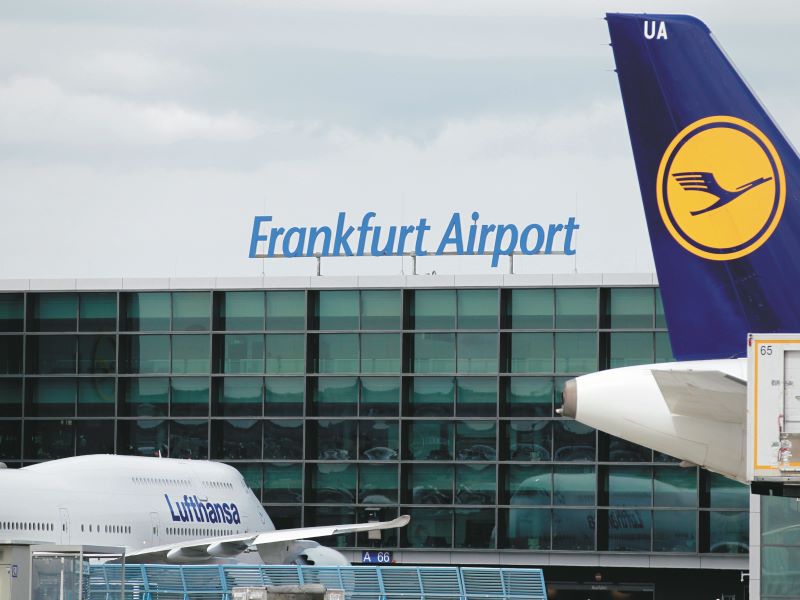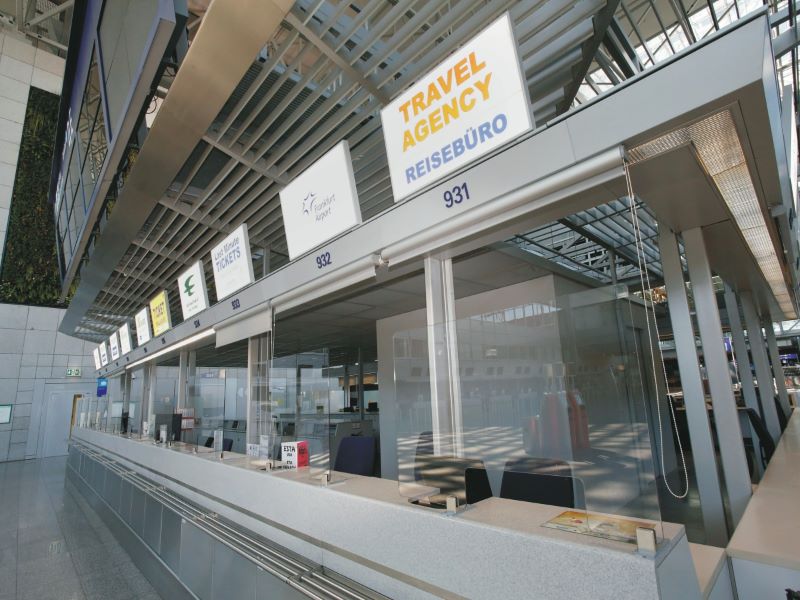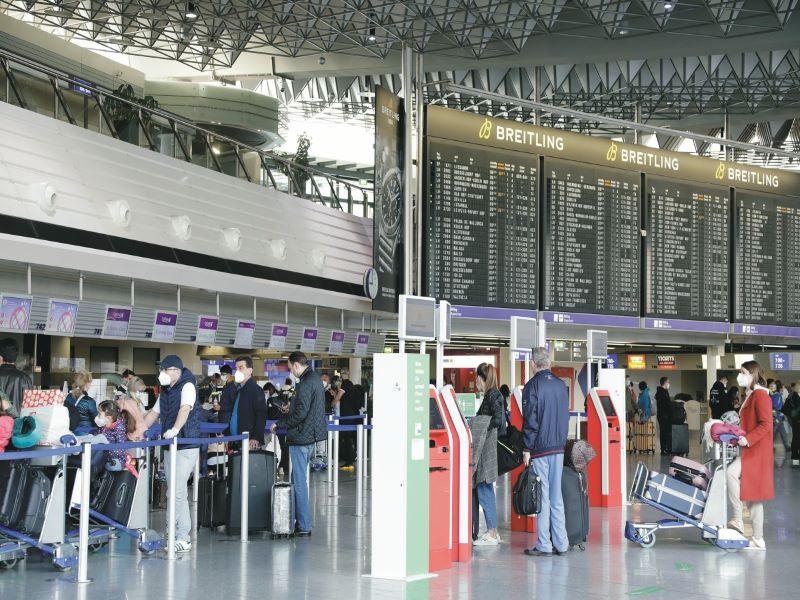Frankfurt International Airport is Germany’s main airport hub. It is owned and operated by the public body Fraport. Deutsche Flugsicherung (DFS) is the authority responsible for the facility’s traffic control.
The airport handled 48.9 million passengers in 2022. It is the sixth busiest airport in Europe by passenger traffic in 2022.
The expansion of Frankfurt Airport began in 2005 and includes the construction of a fourth runway and a third passenger terminal (Terminal 3) to increase the airport’s capacity to handle up to 100 million passengers a year. The expansion also doubles the retail space at Terminals 1 and 2 to 20,000m² (completed in 2007) and provides high-speed rail services.
Opened in January 2007, the Airport City Mall was fully redesigned and reopened in March 2010. The mall was modified and expanded to connect to major car parks, the regional train station, and Terminal 1.
The fourth runway at the airport became operational in 2011 while the new Terminal 3 is expected to enter service in 2026.
Terminal 1 expansion
In October 2005, Fraport instigated a major expansion of Terminal 1 that raised the capacity of the main terminal by four million passengers a year. Both the arrival and departure levels of Hall C were extended 40m eastwards to expand the floor space to 25,000m². This allowed 40 additional check-in counters to be added on two levels and four 90m baggage carousels, as well as 900m² for shopping facilities.
Fraport spent €115m on the Hall C project, including €10m for the new baggage conveyor system and modernising the fire safety equipment in the adjoining terminal areas.
Planning for this major project started in April 2003 and preliminary work began in July 2005, with the architectural design by Christoph Mäckler of Frankfurt. Completion of the building shell was achieved in mid-2006 and the inauguration took place in June 2007. Due to the extra capacity, the enlarged halls help to bridge capacity requirements until the planned Terminal 3 at the south of the airport is ready.
An 800m westward expansion of Terminal 1, called Pier A-plus, was completed in October 2012. This increased the terminal’s annual capacity by six million passengers and provided seven new parking positions for wide-body aircraft.
Frankfurt airport runway project
The new north-west runway (the fourth at the airport) is 2,800m-long. The centre-line separation from the existing north runway is approximately 1,400m. This allows simultaneous landing operations on these two runways (resulting in more hourly operations), which was not possible on the old parallel runways because they were too close together.
The site of the new landing runway is located partly in the Kelsterbach Forest (the Mönchwald), which has caused concerns for environmental groups.
The north-west runway occupies 217ha of land, including the connecting taxiways to the apron. Woodland use amounted to 162ha of protected forest.
The runway came into service in October 2011 and allows the airport to handle 90 movements an hour. The runway was initially due to be in service by 2007. However, environmental concerns over a chemical factory held up the process.
There were also major objections from the town of Kelsterbach and the Bund fur Umwelt und Naturschutz Deutschland, an environmental organisation. In August 2008, following the Hesse Economics Ministry giving zoning approval for the runway, the airport started preliminary work for the runway, including groundwater monitoring, planning for the relocation of protected species, surveying for buried munitions from the war, and soil testing. The northwest runway is being expanded to allow aircraft to land in all weather conditions
New Terminal 3 at Frankfurt Airport
At the end of 2005, the US airbase land in the south of Frankfurt Airport reverted to the ownership of Fraport. A new passenger terminal was then planned for construction on the reclaimed site, which is expected to increase the airport’s current capacity by up to 19 million passengers a year. The terminal will include three piers, a central marketplace, and lounges.
The design by Professor Christoph Mäckler was chosen from an international design competition of 45 architects. Additional taxiways and 75 aircraft stands are to be built to support operations of the new terminal.
A total of 305ha are needed for the new Terminal 3, associated aircraft positions and taxiways, new freight facilities, maintenance buildings, and car parks. Approximately 188ha of this space can be acquired within the existing airport boundary and a further 108ha outside the fence will also be required. Originally scheduled for completion in 2023, the terminal project experienced delays due to Covid-19 pandemic-related disruptions. The new terminal is expected to enter service in 2026.
Fraport has estimated the costs for the new building will be €1.1bn ($1.16bn). The European Investment Bank (EIB) provided €400m ($422.2m) of funding for the construction of Terminal 3.
The 250m-wide and 16m-high hall of the new steel and glass terminal, housing the check-in desks, will become the airport’s modern architectural landmark. Security procedures will take place in a separate section, after which the passengers will enter a large hall featuring retail shops.
When complete, the terminal will have four aeroplane fingers between 350m and 650m in length, allowing 50 aircraft to be parked at any one time.
The airport’s SkyLine people-mover and central baggage system will be extended to Terminal 3, ensuring quick transfer times at the new terminal. There will also be approximately 27 parking bays to assist with the convenient movement of passengers to and from the terminal using public transportation.
Passengers who arrive from Terminal 1 or the long-distance railway station in the northern section of the airport will therefore be able to cover the 3.5km stretch to Terminal 3 within eight minutes.
For the third terminal to be linked to the airport’s central baggage system, a tunnel system for luggage hasto be built under the two take-off and landing runways, using similar mining technology as what was used to build Frankfurt’s underground railway.
Electromobility and digital transformation of the airport
The state government of Hesse provided €690,000 to Fraport to enhance electromobility at the airport. Of these funds, €464,000 will be spent on constructing suitable charging infrastructure at the airport and €225,000 will be spent on buying two electric buses for transporting passengers.
Fraport will invest approximately €1.2m to expand charging facilities on the airport’s apron by the end of 2024.
Fraport has received the licence for the 5G network by the German Federal Network Agency. It partnered with NTT, a global IT service provider, to build Europe’s largest private 5G campus network at Frankfurt airport, which will enable a high bandwidth and real-time data transfer at the airport.
The private 5G network will provide better data control and an autonomous voice control environment at the airport.
A380 maintenance base at Frankfurt Airport
The A380 maintenance hangar was inaugurated in 2008. The 22-acre site was handed over to Lufthansa in June 2005 on a 65-year lease but, a protest by German green environmentalists delayed construction, which started in June 2006.
The hangar’s first phase was opened in January 2007 by Lufthansa Technik. Approximately 350m-long, 140m-wide, and 45m-high, with a floor space of 20,000m², the facility offers space for two A380s or three Boeing 747s. It can accommodate up to four A380 aircraft simultaneously.
Europe’s largest aircraft maintenance facility, the new hangar was designed by Gerkan, and Marg & Partner Architects of Hamburg, Germany.
Frankfurt Airport’s Pier C/D changes
The building connecting Pier C/D T1 and Terminal 2 was opened in March 2008. It was designed by JSK Architekten. The project took 20 months to complete and required a €340m investment. The pier has an additional capacity of four million passengers a year and enables two-level boarding for 550 passengers onto an A380 flight.
In addition, there is access to the new 90m-long baggage carousels of hall C. Passengers are able to access Pier C/D via a 320m-long connecting corridor from the expanded hall C and can then board A380s on two levels. For the A380, there are three docking positions, each equipped with three passenger bridges for simultaneous two-level boarding.
The open and expandable gates of pier C/D are over two levels. Level two is for economy passengers while level three, with the Senator lounge and business gates, is reserved for priority passengers.
Environmental concerns
Objections to the airport expansion project come mainly from environmental grounds. Despite the beneficial economic impact of Frankfurt airport on the regional economy, there is considerable public hostility to further development.
To address the concerns of the public regarding issues such as aircraft noise and the airport expansion leading to increased pollution, Fraport developed a ten-point programme, which includes promoting other modes of transportation, limiting night flights, funding noise insulation programmes, increasing charges for night-time landing, and the mandatory introduction of low noise approach and departure procedures at night.
In addition, Fraport introduced the CASA programme, which is a voluntary purchase programme for residents around the airport who feel they need to move away from the area because of the additional noise and pollution.










